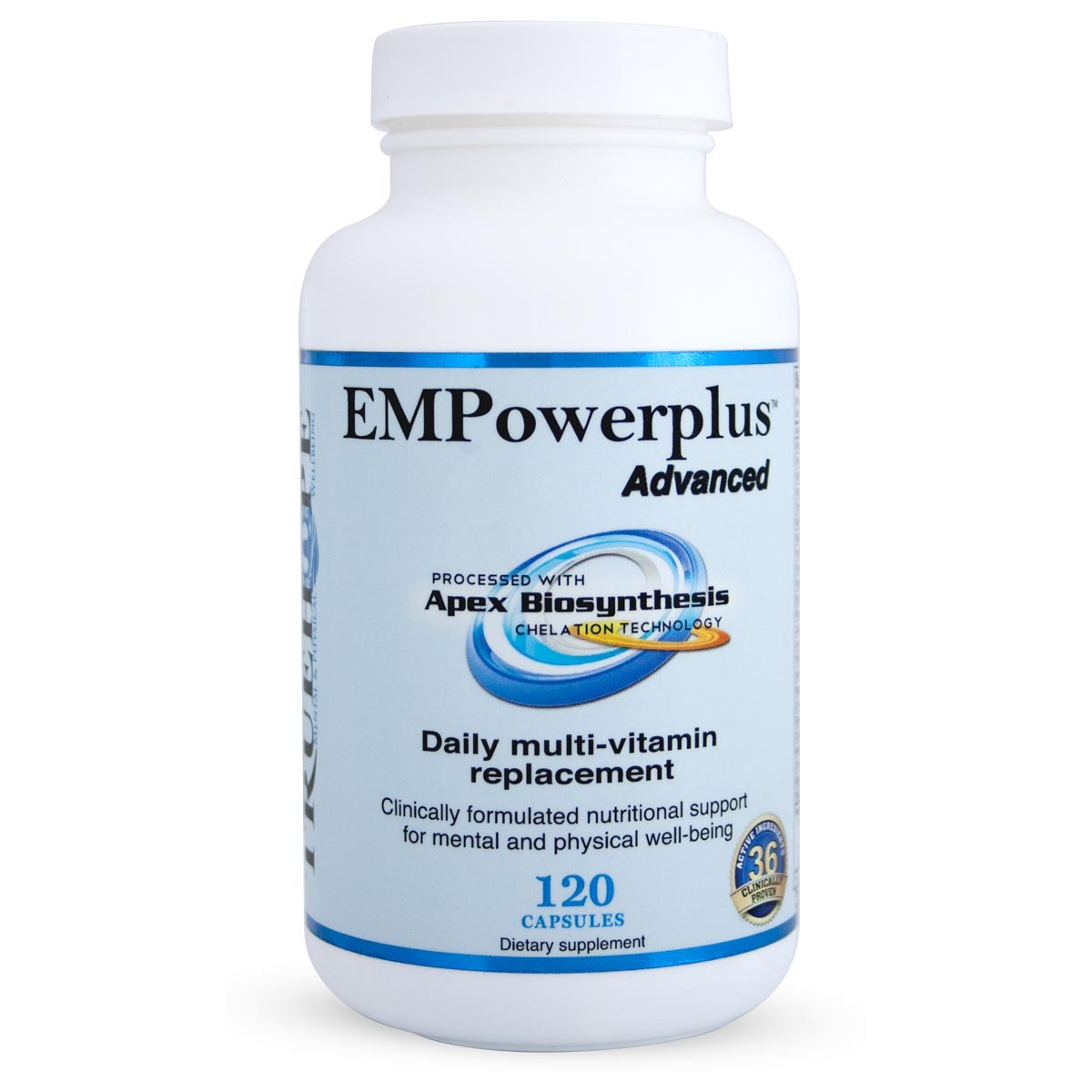From time to time, we receive questions from both customers and otherwise interested persons regarding our use of cyanocobalamin as the primary form of vitamin B12 in EMPowerplus. Questions arise mainly because of concern for the potential toxicity of cyanocobalamin, considering its connection to cyanide. It is important for us to publicly address this concern.
The first thing we must know is that microorganisms are the only true source of B12. Any B12 found in plants is because of bacteria found on or in those plants. While microorganisms produce many varieties of B12, humans can convert only 5–6 forms into the ‘active’ human form. We must get the core molecule pre-formed from our diet; this is what makes it an essential nutrient.
What is cyanocobalamin?
Cobalamin is the general term that describes a group of cobalt-containing compounds. Several forms of Vitamin B12 can be converted to either of the two cobalamin coenzymes active in human metabolism: methylcobalamin and 5-deoxyadenosylcobalamin. All these forms differ only by the functional group that occupies the ‘R’ position.
In North America, the supplement and pharmaceutical industries have used cyanocobalamin as the primary commercially available B12preparation for the last century.
Does cyanocobalamin contain cyanide?
Cyanocobalamin was accidentally formed when vitamin B12 was first isolated. Researchers tried to extract it, but realized most methods could not produce a stable form. The only extraction process that produced a stable form involved the use of charcoal.
Later, researchers discovered that the charcoal used in extraction contained cyanide. The naturally-occurring cyanide in the charcoal stabilized the vitamin B-12 molecule, which otherwise would have been so unstable that it could be destroyed simply by being exposed to light.
Isn’t cyanide toxic?
Vitamin B12 (as cyanocobalamin) has shown no toxicity to animals at several thousand times their nutritional requirements. Some humans suffering from pernicious anemia have received for years doses that are 10- 20 times that of the highest estimate of average daily consumption. The only reaction to vitamin B12 demonstrated in humans to date is the development of sensitivity that can manifest as allergy or anaphylaxis after intravenous administration of relatively high doses.
Cyanide-containing substances occur naturally in not only charcoal, but in the fruits, seeds, roots, and leaves of numerous plants, Over 2,650 plant species can produce hydrogen cyanide, including almonds, sorghum, cassava, soybeans, spinach, lima beans, sweet potatoes, maize, millet, sugarcane, bamboo shoots, kale, cabbage, radishes, broccoli, Brussels sprouts, cauliflower, collards, mustard greens, turnips, and kohlrabi.
As long as their diet contains adequate amounts of protein, humans can naturally detoxify cyanide satisfactorily. It combines with sulphur and we can excrete it in our urine. Also, vitamin B12 absorption is specific and limited; only a very small proportion of vitamin B12 is physiologically available and active when taken orally. Most of the B12 ingested benefits microorganisms that live in the lower gastrointestinal tract.
Cyanocobalamin has been used safely and effectively for the last century. It may not be the active human form, but of the several forms that we consume, only two are active for humans. Isn’t it wonderful that our bodies can convert them and make them work for us?

